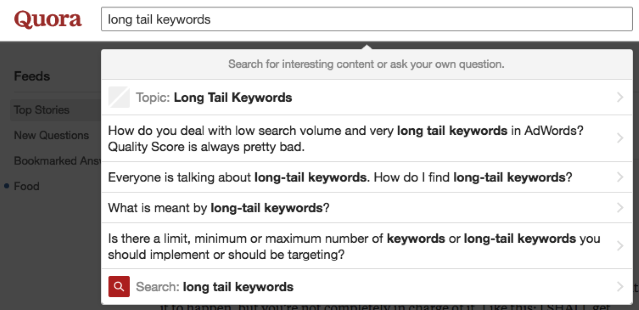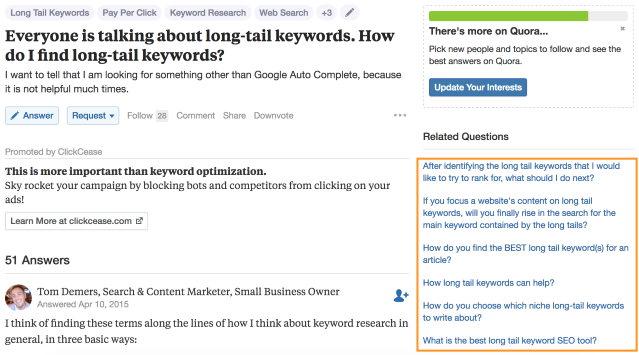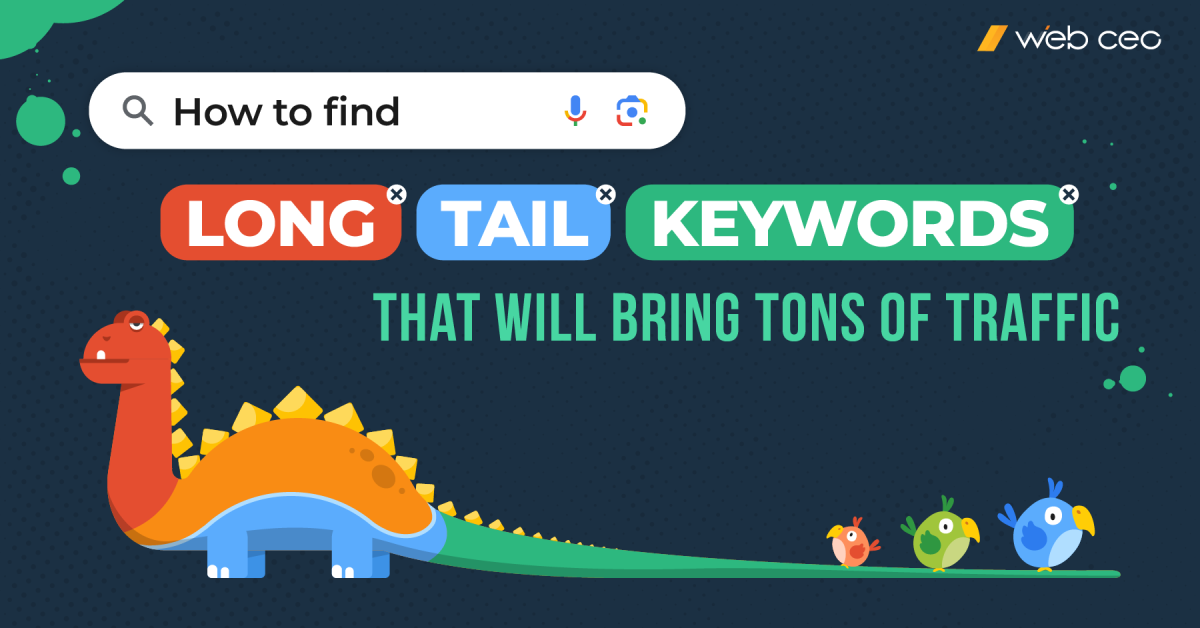
Long tail keywords are more specific keyword phrases that searchers use when they know what they want. These keyword phrases usually have low search volume, but they often convert well. They can be really valuable if you know how to use them.
Why are long tail keywords important for SEO?
Long tail keywords are very specific and super-targeted. This makes them important for your business success.
With smart implementation of a long tail keyword strategy, you may pull in less traffic, going purely by numbers, but the return on your investment will be proportionally much higher. You can attract exactly the audience you’re looking for, and that audience will be far closer to point-of-purchase than those who are attracted by short search terms.
Long tail keywords are important for your SEO and your business, because:
- Long tail keywords convert well. By targeting specific search terms, you can know exactly what your searches need, so you can easily convert them into buyers.
- Long tail keywords are usually very low competition. Most website owners try to get high rankings for more broad search terms, while not thinking about how much traffic low-volume, less popular terms can bring.
- Long tail keywords are valuable for PPC. They convert well, but cost less, since there’s less competition.
- You can build specifically optimized pages to turn searches into customers. As with all SEO, it’s the long game that counts.
How to find the best long tail keywords
Obviously, not every overly long phrase is going to be a good keyword. If you want to find the ones that will work for your website and bring in useful traffic, you must take a few important things into consideration.
The most important of them being user search intent – as in, a keyword’s ability to attract users with the right mindset.
There are multiple types of user search intent. Once you can tell the difference between them, finding the right long tail keywords will be a breeze.
- Commercial: when users are looking for something to buy or comparing different products. Example: the best wireless headphones.
- Transactional: when they want to spend money on something specific (not to be confused with commercial!) Example: order sushi.
- Informational: when they want to learn something. Example: how to learn Python.
- Navigational: when they want to find a site or a page. Example: Robert Downey Jr. Twitter.
- Locational: when they want to find a place. Example: café near me.
- Seasonal: when they want something related to a time period. Example: best places for summer vacation.
And the other thing you want from your long tail keywords is low competition. You can easily measure a keyword’s competitiveness with the right SEO tools.
For example, here’s what you’ll see if you punch a keyword into WebCEO’s Keyword Research tool:
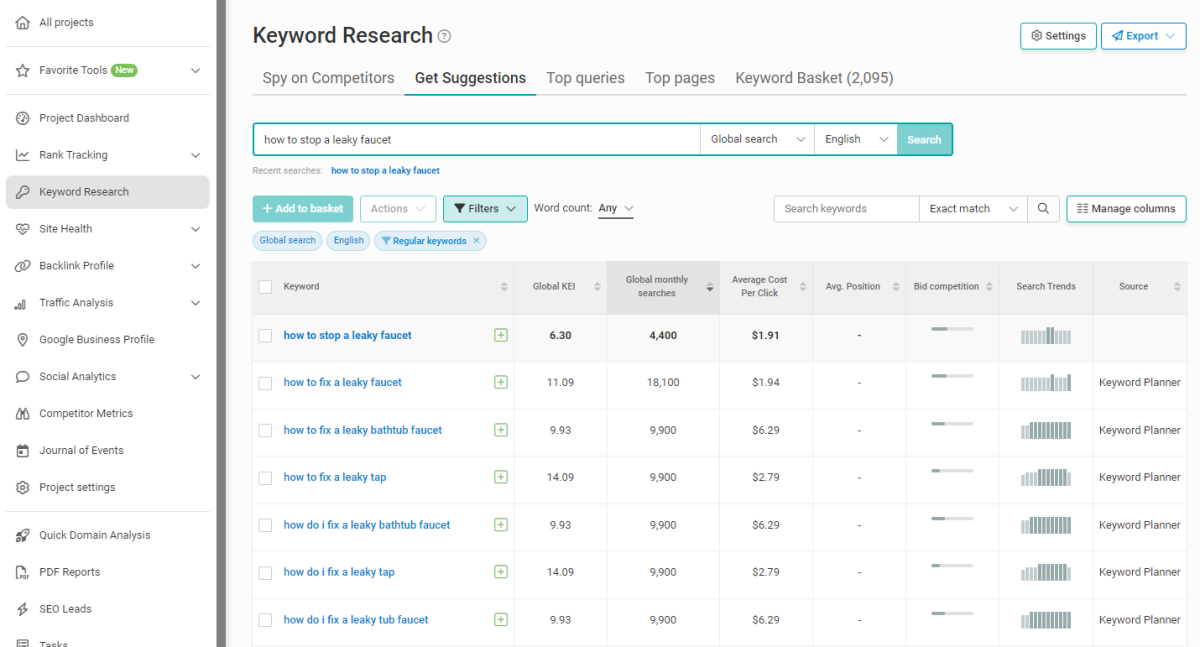
The Global KEI column is usually enough: a high value is better because it means more monthly searches for less competition. If you want details, you can also look at the Average Cost Per Click and Bid competition columns to see the exact competition levels and how much people bid for any given keyword.
Bottom line is: user search intent + low competition = good long tail keyword.
How to find long tail keywords using free tools
Long tail keywords are often very low competition, because others do not think about them. However, there are some tools that you can use to generate a list of long tail keywords for free.
1. Google related searches (autocomplete) and Google query suggestions
When I explained how to use LSI keywords on your site, I could have mentioned two sources that can be a good source of long tail ideas as well as LSI (semantic related keyword) ideas.
- Google autocomplete: Enter your search term in a search query field, and Google Autocomplete will automatically fetch and show the keywords related to the particular query.
- Google query suggestions: Enter a keyword and go to the “Related searches” section at the bottom of the search engine results page. These “related searches” are a good source of long tail keyword ideas.
- People also ask: Similar to the above, this section contains questions asked by users (with collapsible answers). The more answers you collapse, the more questions appear.
2. Quora and other Q&A sites
People use Quora and other Q&A sites to find answers for questions that are really important for them. You can use Quora to see how your prospects communicate their needs and to find out what language you should use.
Go to Quora and enter your search term in a search field. Quora (like Google) shows previously asked questions related to your search term.
When you click on a question, you can see an even bigger list of related questions. It is on the right of the page.
3. Answer the Public
Another great and absolutely free tool is Answer the Public. This tool scrapes the auto suggestions of Google and Bing and draws a beautiful diagram of long tail keywords. This tool helps to create content that’s useful, funny or inspiring.
To start, just enter your keywords and select a country. You will get a list of questions your audience needs to be answered and the list will be beautifully visualized.
4. Google Search Console
Google Search Console is one of the best tools for defining your keyword strategy. You can go directly to Search Console, Search results -> Queries. Scroll down to see a list of actual keyword phrases people are typing into Google to find your site. You can sort them by Clicks or Impressions to pick the ones they use most often.
To get even more info, you can go to the WebCEO Keyword Research tool and see Top queries tab.
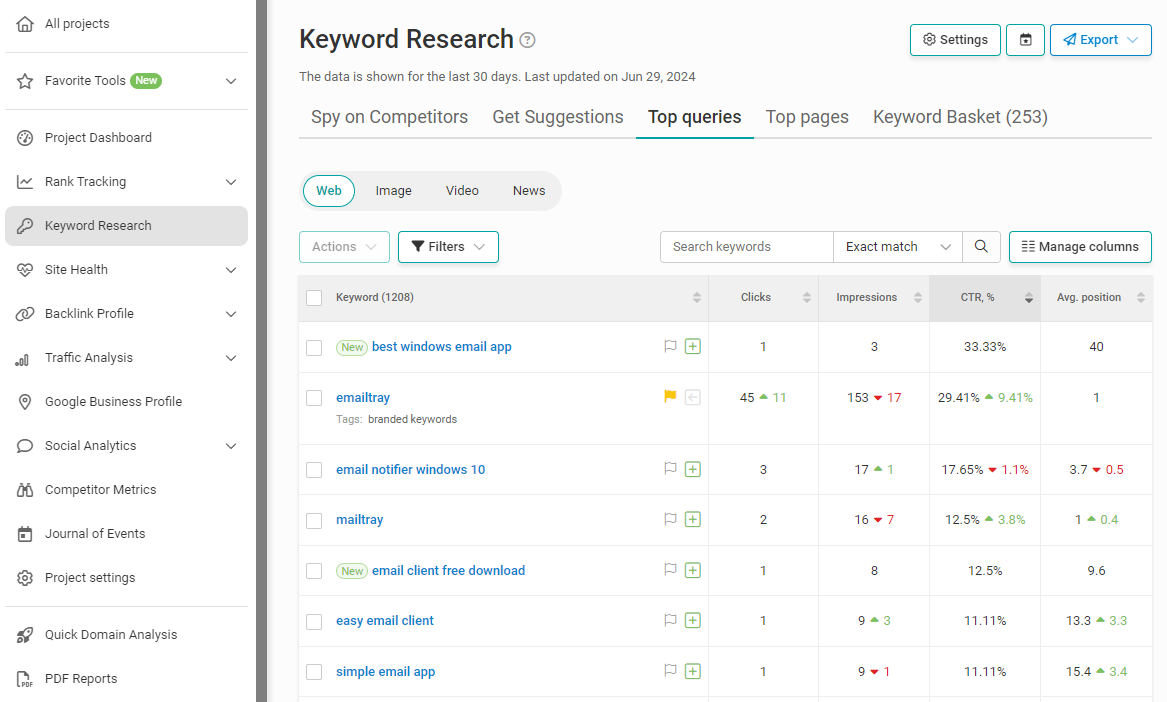
Look further down the list and you will find long tail keyword opportunities, especially the ones with a lot of impressions.
How to use long tail keywords on your site
Look at the list of long tail keywords you have gathered using the above mentioned tools. Most of them are discussion-style content. Remember, that the content you create should answer those which are in the form of questions and the content should be helpful to searchers.
Unless you have an army of writers, you can’t create a piece of content for every search phrase you want to rank for. You will have to target long tail keywords by including multiple phrases in your keyword bucket throughout the page:
- Vary the Title tag and headings.
Use different search terms in the page Title and headings. This will also ensure that your pages aren’t over-optimized for your primary keyword.
- Use long tail variations in your content.
By researching the variations of a keyword you might want to include in your content, you can be aware of them as you craft content, and you can strategically place modifiers throughout your page’s content. Long tail phrases can help you create more natural content.
- Pay attention to all on-page elements.
Be sure to place all your long tail keywords in your various pages’ headlines, alt attributes, title attributes, etc.
- Vary your internal links.
This allows you to avoid being “over-optimized,” and if you stick primarily to variations that contain the head keyword and append modifiers, rather than synonyms, you’re consistently transferring relevance for your core term.
The best strategy to bring more traffic to your site is to use all possible tactics. With the WebCEO tools you can easily outrank your competitors.
